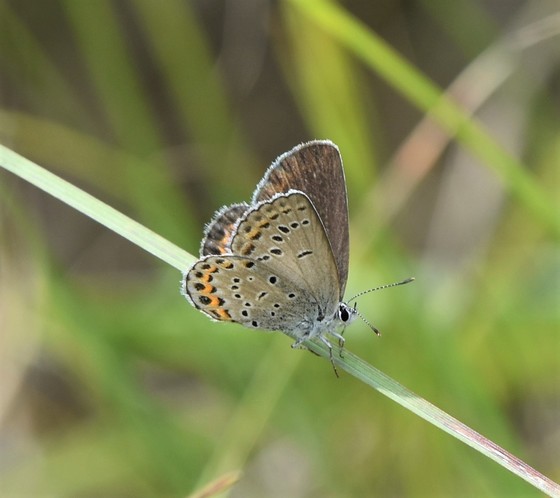Let us for good reasons reprise the ugly environmental record of high profile/small deerslayer, fake nose fancier, retired (mercifully) US EPA official and Scott Walker corporate cudgel Cathy Stepp's snotty rant (now unavailable, but saved here, and below) against both Karner Blue butterflies and the Wisconsin DNR employees she ended up 'managing' who were trying to help save the species.
Her words:
The most crushing/controversial rules that businesses have to follow in our state are--most times--done through the "rule making process" of our state agencies. Without bogging everyone down with some really boring procedure talk, suffice it to say that many of these great ideas (sarcasm) come from deep inside the agencies and tend to be reflections of that agency's culture.
For example, people who go to work for the DNR's land, waste, and water bureaus tend to be anti-development, anti-transportation, and pro-garter snakes, karner blue butterflies, etc...This is in their nature; their make-up and DNA. So, since they're unelected bureaucrats who have only their cubicle walls to bounce ideas off of, they tend to come up with some pretty outrageous stuff that those of us in the real world have to contend with...
- so please enjoy with me the content and its ironies in Tuesday's DNR news release as Earth Day approaches:
FOR IMMEDIATE RELEASE: April 20, 2021
Contact: Chelsea Weinzinger, DNR Karner Blue Butterfly Recovery Coordinator
Chelsea.Weinzinger@wisconsin.gov or 608-397-0631 DNR Seeking Volunteers For Karner BlueButterfly SurveysRequired Online Training Available Now  The DNR is seeking volunteers to help collect information about the federally endangered Karner blue butterfly and its habitat to help advance recovery efforts. / Photo Credit: Wisconsin DNR MADISON, Wis. – The Wisconsin Department of Natural Resources (DNR) is seeking volunteers to help collect information about the federally endangered Karner blue butterfly and its habitat to help advance recovery efforts. One of the many things Wisconsinites can be proud of is the abundance of habitats that support the world’s largest populations of Karner blue butterflies. Wisconsin is one of the last remaining strongholds in the entire Karner range. They can be found in barrens, savannas, prairies, and right of way corridors. The adult Karner is about the size of a nickel and has two flight periods: The first beginning in late May/earlyJune into late June and the second beginning in early/mid July into late August. There are many opportunities for the public to help protect the Karner blue and its habitat, including volunteering to survey this special butterfly. Anyone interested in volunteering must watch two free online training videos and take a quiz. These and other resources can be found on the Karner Volunteer Monitoring Website. There is also an optional virtual field day at 1 p.m. on June 11. To get the link for the field day, please email Chelsea Weinzinger, DNR Karner Blue Butterfly Recovery Coordinator, at Chelsea.Weinzinger@wisconsin.gov. The volunteer training, which is part of the DNR's monitoring program for Karners, has been revamped this year and is an important part of the multifaceted efforts underway to protect and restore Karners and their habitat. The progress of these efforts has helped maintain Wisconsin's Karner blue butterfly population as the nation’s largest stronghold. "Our goal is to train citizen scientists to be able to identify Karner blue butterflies and help us collect data to look at metapopulation dynamics, or how this species moves around the landscape over time," said Chelsea Weinzinger, DNR Karner Blue Butterfly Recovery Coordinator. "Historically, we’ve focused on surveying the largest known occupied sites over the years, so expanding our capacity to collect large scale information will improve our data and give us a better statewide picture of how this species is faring." The Karner blue butterfly was listed in 1992 as a federally endangered species. Karner caterpillars only eat native wild lupine (Lupinus perennis), a plant mainly found in oak and pine barrens communities, and such habitats have been lost in Wisconsin and elsewhere. |
|

An update on the PolyMet mine permit that caused Cathy Stepp to "retire" from EPA. https://www.eenews.net/stories/1063729745/print
ReplyDelete